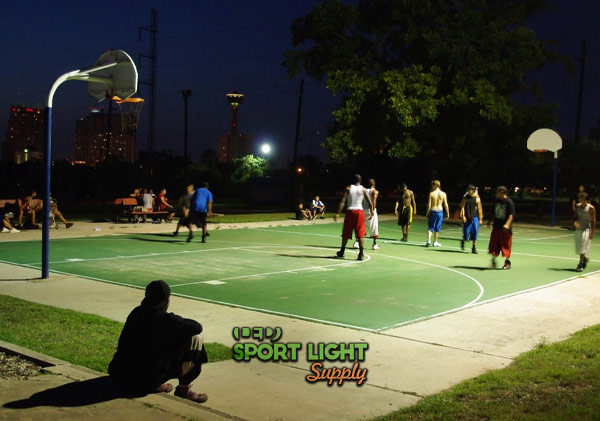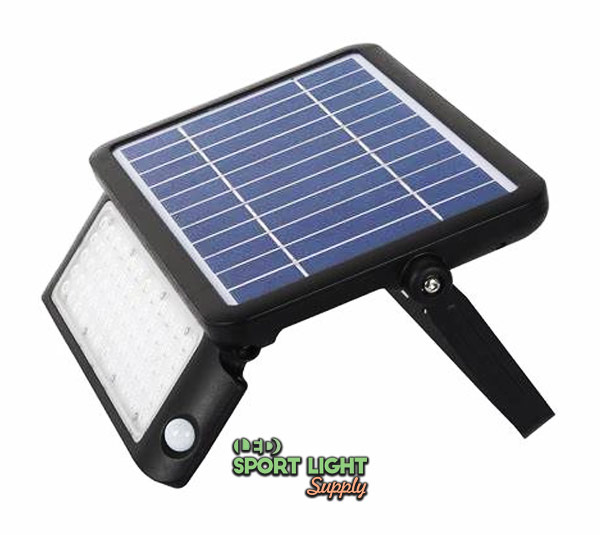Solar fixtures can be a fantastic addition to your outdoor basketball court, offering both environmental and economic benefits. Leveraging advancements in LED technology, these fixtures provide an affordable and eco-friendly lighting solution. However, it’s essential to carefully evaluate their actual lighting capacity to ensure they meet your needs.
First and foremost, the placement of the photovoltaic panel is crucial. It must be positioned on a solid, stable surface in a location where it will receive direct sunlight for a minimum of eight hours each day. This ensures that the panel can fully charge the batteries, optimizing the performance of the solar lights. It’s also important to note that different models come with varying battery capacities, which can affect the intensity and duration of the lighting. Therefore, the specific model you choose may be influenced by the stock availability at the time of purchase.
Recent advancements have led to significant improvements in solar flood lights compared to earlier versions. Modern designs feature robust and durable housings, which enhance their longevity and performance. These newer models are equipped with high-efficiency LED chips that are often densely packed to provide better illumination. Despite these advancements, it’s still crucial to assess the specifications of each solar light to ensure it meets the lighting requirements for your basketball court.
When considering solar lights for illuminating a basketball game, there are a few additional factors to keep in mind. Evaluate the brightness and coverage provided by the lights to ensure they offer adequate visibility for gameplay. Additionally, check for features such as adjustable mounting options and the ability to fine-tune the light direction, which can further enhance the functionality of your lighting setup.
Table of Contents
ToggleSelecting the Best Solar Lights for Basketball Courts

Lumen Output
The lumen output is a key specification for any lighting system. It indicates the total amount of visible light emitted by the fixture and is crucial for determining how well the area will be illuminated.
Illuminance Requirements
For a standard basketball court, especially if hosting events such as local tournaments or competitive games, you need a higher level of illumination. The recommended lumen output is between 100,000 and 250,000 lumens for a 430-square-meter playing field. This ensures proper visibility and minimizes shadows, which is essential for fair play and safety.
Cost Considerations
Higher lumen outputs come with increased costs. Balance your budget with the necessary brightness levels to achieve the best performance for your basketball court. While solar lights can significantly reduce electricity costs by utilizing sunlight for recharging, they currently may not fully replace traditional lighting systems but can serve as an excellent supplementary option.
Understanding Lumen Values
| Type of Solar Flood Lights | Lumens Provided | Remarks |
|---|---|---|
| Standard Solar Flood Lights | 300 – 1,500 lumens | More affordable but may not offer sufficient brightness for a full basketball court. |
| High-Performance Solar Flood Lights | Up to 10,000 lumens | Provides intense lighting needed for competitive sports settings. |

Photovoltaic Cells and Battery Capacity
The effectiveness of solar lights depends on the quality of photovoltaic cells and battery capacity.
Photovoltaic Cells
Function
Solar cells, also known as photovoltaic cells, play a crucial role in harnessing solar energy. They capture sunlight and convert it into electricity through the photovoltaic effect. These cells are composed of semiconductor materials that absorb photons from sunlight, which in turn generates electrical energy. This process is essential for powering solar lighting systems efficiently.
Construction
To ensure durability and longevity, photovoltaic cells are typically encased in protective layers, often made of glass. This protective casing helps prevent deterioration from environmental factors and allows electrons to move freely within the cell, which is vital for generating electricity. The construction not only enhances the cell’s efficiency but also extends its operational lifespan.
Battery Capacity
Recommendation
For optimal performance in lighting a basketball court, it is recommended to use a lithium-ion battery with a capacity of at least 10,000 mAh. A larger battery capacity provides extended operation times and improves performance, particularly during periods of extended low sunlight. This ensures that the lighting system remains functional even when sunlight is insufficient for recharging.
Storage Limitations
The capacity of the battery significantly impacts how long the lights can operate after being charged. While larger batteries can offer more power and longer operational periods, they also contribute to increased system costs. Furthermore, the battery’s recharge rate and overall performance can be affected by cloudy weather, which can influence how well the system maintains power during adverse conditions.
Smart Controls
When choosing a lighting system, it is beneficial to opt for models equipped with smart controls accessible via WiFi or Bluetooth. These smart controls allow users to monitor and adjust various settings such as battery status, brightness, color temperature, and dimming from a remote location. This feature is particularly advantageous for high mast lighting setups, providing enhanced convenience and control over the lighting system.
High-Quality LED Chips
LED Chip Quality
Components
LED chips are integral components within light fixtures, functioning as small microcircuits that contribute to the overall lighting performance. Each LED package can house hundreds of these chips, which collectively impact the brightness and quality of the emitted light. The arrangement and efficiency of these chips are essential for achieving the desired illumination.
Color Rendering
The effectiveness of LED chips is significantly influenced by the quality of the raw materials used in their production, such as phosphor, and the overall manufacturing process. A higher Color Rendering Index (CRI) is indicative of better color accuracy and light quality. This means that a light with a high CRI will more accurately render colors compared to one with a lower CRI, enhancing the visual experience and ensuring more accurate color representation.
Binning Process
The binning process involves sorting and grouping LED chips based on their performance characteristics. Different manufacturers employ varying methods for this process, which can result in performance differences between brands. To ensure the best quality and performance, it is advisable to consult with lighting experts who can guide you in selecting a reliable brand that meets your specific needs.
Installation Flexibility
Solar lights offer the advantage of not requiring AC power outlets, which enhances their installation flexibility. However, it is important to ensure that the LED chips used in these lights provide adequate luminous flux to meet your lighting needs. Proper installation, particularly on or near the basketball board, is crucial for maximizing the effectiveness of the solar lights and ensuring optimal illumination for the intended area.
Avoiding Lighting Pitfalls: Shadows and Glare
Placement Strategies
Fence Mounting
Installing solar lights on the fence is a common strategy for providing general illumination. However, this placement requires careful consideration to avoid creating unwanted shadows. To achieve even illumination across the basketball court, ensure that the lights are distributed evenly and adjusted to minimize shadowing effects. Proper alignment and spacing are essential to ensure comprehensive coverage and prevent areas from being inadequately lit.
Backboard Mounting
Mounting lights on support structures near the backboard can significantly enhance visibility in critical areas, such as near the basket. This strategic placement focuses light on key playing zones, which can improve overall visibility during gameplay. It is important to adjust these lights carefully to avoid excessive glare, which can interfere with players’ vision and overall performance. Proper calibration is crucial to ensure that the light enhances rather than disrupts the playing experience.
Balancing Light
When placing solar lights, it is important to consider the dynamics of the game, including scenarios where players execute complex maneuvers. Proper positioning of lights helps reduce shadows and prevent glare, which can otherwise hinder visibility and affect players’ performance. Ensuring that the lights are set up to accommodate the movements and actions of players is key to providing effective and unobstructed illumination.
Conclusion
Choosing the best solar lights for a basketball court involves a careful balance of lumen output, photovoltaic cell efficiency, battery capacity, and LED chip quality. By focusing on these key factors, you can ensure that your court is well-illuminated, enhancing both gameplay and safety while benefiting from reduced electricity costs and environmental impact. Proper installation and strategic placement will further maximize the effectiveness of your solar lighting system, providing reliable and efficient lighting for your outdoor basketball activities.
